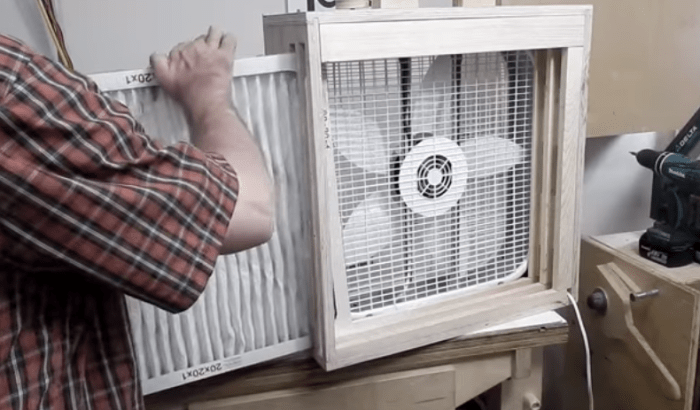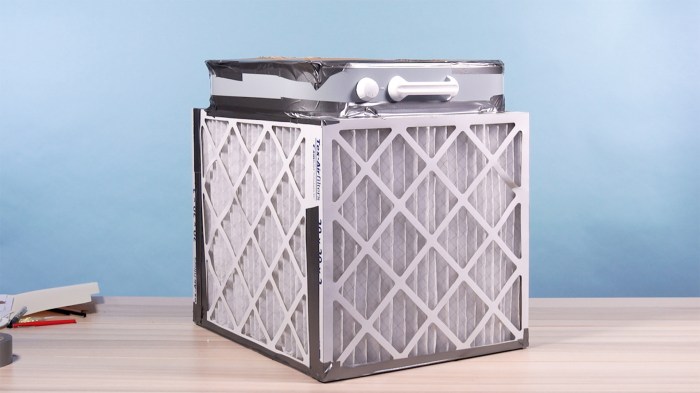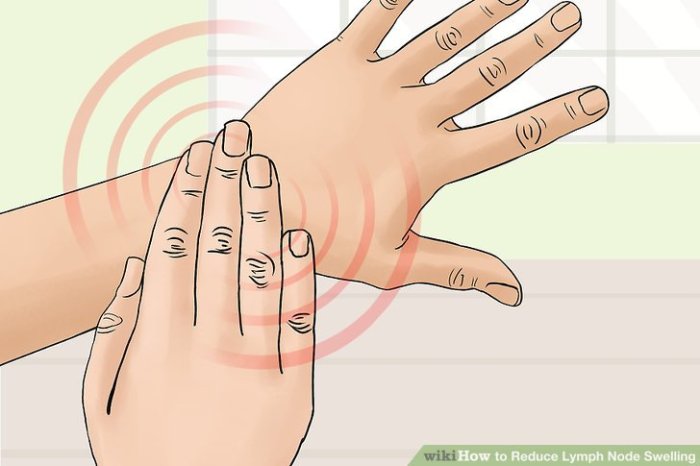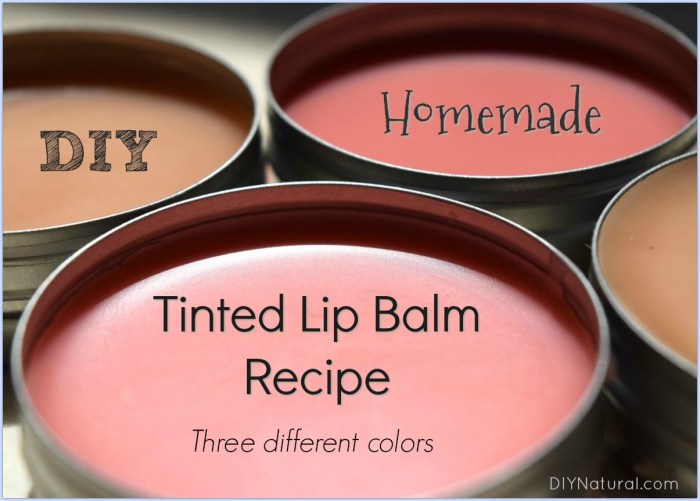DIY Filter Air: Breathe Easy with Homemade Solutions. Tired of stale, polluted air indoors? You’re not alone. Many people are seeking ways to improve their indoor air quality, and building a DIY air filter can be a cost-effective and rewarding solution. This guide will walk you through the process of creating your own air purifier, from choosing the right filter media to assembling the device and maintaining it for optimal performance.
From the everyday dust and pet dander to more serious pollutants like volatile organic compounds (VOCs) and mold spores, your home’s air quality can significantly impact your health and well-being. Understanding the types of air pollutants present in your home is crucial for selecting the appropriate filter media for your DIY air filter. This guide will provide you with the information you need to make informed decisions about materials and design.
Filter Media Selection
Choosing the right filter media is crucial for the effectiveness of your DIY air filter. Different filter media have varying strengths and weaknesses, making it important to understand their characteristics and suitability for specific air pollutants.
HEPA Filters
HEPA (High-Efficiency Particulate Air) filters are highly effective at capturing airborne particles, including dust, pollen, mold spores, and pet dander. They are widely considered the gold standard for air filtration. HEPA filters are typically made from a fine mesh of fibers that trap particles as air passes through them.
Activated Carbon Filters, Diy filter air
Activated carbon filters are excellent at removing gases and odors from the air. Activated carbon is a highly porous material with a large surface area, allowing it to adsorb (trap) various gaseous pollutants, including volatile organic compounds (VOCs), smoke, and fumes.
Cotton Filters
Cotton filters are a simple and inexpensive option for basic air filtration. They are primarily effective at capturing larger particles like dust and lint. However, they are less effective at filtering smaller particles and gases compared to HEPA or activated carbon filters.
Choosing the Right Filter Media
- For general dust and allergens: HEPA filters are the most effective choice, capturing a wide range of airborne particles.
- For gases and odors: Activated carbon filters are highly effective at removing various gases and odors from the air.
- For a combination of pollutants: Consider using a combination of filter media, such as a HEPA filter with an activated carbon layer, to capture both particles and gases.
- For specific pollutants: Research the specific pollutants you are concerned about and choose the filter media that is most effective at removing them. For example, if you are concerned about formaldehyde, look for filters that specifically target VOCs.
DIY Air Filter Design

Designing your own air filter can be a rewarding project, allowing you to customize your air purification system to suit your needs and budget. You can choose from various designs, each with its unique advantages and drawbacks. This section explores popular DIY air filter designs, providing step-by-step instructions and visual aids to guide you through the construction process.
Box Filter
A box filter is a simple and effective DIY air filter design that can be easily constructed using readily available materials. It involves enclosing a filter media within a box, often made from cardboard or plastic, and using a fan to draw air through the filter.
- Materials: Cardboard box, filter media, fan, duct tape, scissors, hot glue gun (optional).
- Instructions:
- Cut a hole in one side of the box for the fan.
- Cut a piece of filter media to fit the inside of the box.
- Secure the filter media to the inside of the box using duct tape or hot glue.
- Attach the fan to the hole in the box, ensuring that it draws air through the filter media.
- Seal any gaps in the box using duct tape to prevent air leaks.
- Image: Imagine a rectangular cardboard box with a hole cut on one side. Inside the box, a piece of filter media is attached to the walls, covering the entire interior. A fan is attached to the hole, facing inwards, drawing air through the filter media.
Fan Filter
A fan filter design utilizes a fan to draw air through a filter media, which is often attached to the fan itself. This design is compact and can be easily moved around.
- Materials: Computer fan, filter media, zip ties, cardboard or plastic (optional), duct tape (optional).
- Instructions:
- Cut a piece of filter media to fit the diameter of the fan.
- Secure the filter media to the fan using zip ties or duct tape.
- Optionally, create a housing for the fan using cardboard or plastic to improve airflow and aesthetics.
- Connect the fan to a power source.
- Image: Visualize a computer fan with a circular piece of filter media attached to its front. The fan is placed on a small cardboard or plastic base for stability, creating a compact air filter unit.
DIY Air Purifier
Building a DIY air purifier involves combining a fan, filter media, and a housing to create a more sophisticated air purification system. This design offers greater control over the filtration process and can be tailored to specific needs.
- Materials: Fan, filter media, plastic container, duct tape, hot glue gun, power source (optional).
- Instructions:
- Cut a hole in the plastic container for the fan.
- Create a filter compartment within the container by attaching filter media to the inside walls.
- Secure the fan to the hole, ensuring it draws air through the filter compartment.
- Seal any gaps in the container using duct tape or hot glue.
- Optionally, connect the fan to a power source for continuous operation.
- Image: Picture a plastic container with a hole on one side. Inside the container, a filter compartment is created by attaching filter media to the walls. A fan is attached to the hole, drawing air through the filter compartment. The container is sealed with duct tape to prevent air leaks.
Testing and Maintenance

After constructing your DIY air filter, it’s crucial to assess its effectiveness and ensure it functions correctly. Regular maintenance is also vital to prolong its lifespan and optimize its performance.
Testing Effectiveness
To determine how well your DIY air filter is performing, you can employ a few simple methods.
- Visual Inspection: Regularly check the filter media for visible signs of dust and dirt accumulation. A visibly dirty filter indicates that it’s working and capturing airborne particles.
- Light Test: Shine a bright light through the filter. If you can see light passing through, it suggests the filter is not very effective at capturing smaller particles. A completely opaque filter indicates better filtration.
- Particle Counter: For a more precise evaluation, consider using a particle counter. These devices measure the concentration of airborne particles in a specific area. You can compare readings before and after running your DIY air filter to assess its effectiveness.
Maintenance Procedures
Regular maintenance is essential to keep your DIY air filter working efficiently. Here are some key procedures:
- Filter Replacement: The frequency of filter replacement depends on the type of media used and the air quality in your environment. Generally, a HEPA filter should be replaced every 3-6 months, while a carbon filter may need replacement every 1-3 months. You can visually inspect the filter for dirt accumulation and replace it when it appears significantly soiled.
- Cleaning: Some filter media, like washable fabric filters, can be cleaned to extend their lifespan. Follow the manufacturer’s instructions for cleaning and drying the filter. Avoid using harsh chemicals or abrasive materials.
- Fan Check: Ensure the fan is running smoothly and is not obstructed by dust or debris. Clean the fan blades regularly to prevent performance issues.
- Housing Inspection: Inspect the housing for cracks or damage that could compromise the filter’s effectiveness.
Troubleshooting Common Issues
Occasionally, you might encounter problems with your DIY air filter. Here are some common issues and solutions:
- Reduced Airflow: This could be due to a clogged filter, a blocked fan, or a malfunctioning fan motor. Check the filter for dirt buildup and clean or replace it if necessary. Also, inspect the fan for obstructions and ensure it’s working properly.
- Noise: A noisy air filter could indicate a worn-out fan bearing, a loose fan blade, or a malfunctioning motor. Check the fan for any loose parts and consider replacing it if necessary.
- Uneven Air Distribution: This can occur if the filter is not properly installed or if the housing has leaks. Ensure the filter is securely fitted and check the housing for any gaps or cracks.
Advanced DIY Air Filter Concepts: Diy Filter Air
Taking your DIY air filter to the next level involves exploring advanced technologies that can enhance its effectiveness in purifying the air. Two popular options for improving air quality are UV lights and ozone generators. While they offer potential benefits, it’s crucial to understand their limitations and potential risks before incorporating them into your DIY air filter design.
UV Lights
UV lights, specifically those emitting UV-C radiation, are known for their ability to disinfect surfaces and kill microorganisms like bacteria and viruses. When used in air filters, they work by exposing airborne pathogens to UV-C radiation, disrupting their DNA and rendering them inactive.
- Effectiveness: UV-C lights are effective in killing airborne microorganisms. Studies have shown that UV-C irradiation can effectively reduce the concentration of bacteria and viruses in the air.
- Safety: UV-C radiation can be harmful to human skin and eyes. It is crucial to ensure that the UV-C light source is shielded and that the air filter design prevents direct exposure to the UV-C radiation.
- Limitations: UV-C lights are not effective against all types of pollutants. They primarily target microorganisms and may not be effective in removing other pollutants like dust, pollen, or VOCs.
Ozone Generators
Ozone generators produce ozone gas, a powerful oxidant that can break down various pollutants in the air, including odors, VOCs, and some bacteria and viruses.
- Effectiveness: Ozone generators are effective in reducing odors and breaking down certain pollutants. However, their effectiveness against specific pollutants can vary.
- Safety: Ozone gas is a respiratory irritant, and prolonged exposure can be harmful to human health. It is crucial to ensure that the ozone generator is properly sized for the space and that the ozone concentration is kept within safe limits.
- Limitations: Ozone generators can produce harmful byproducts, such as nitrogen dioxide, which can contribute to air pollution. Additionally, ozone can react with other pollutants in the air, forming new, potentially harmful compounds.
Incorporating Advanced Features
When incorporating UV lights or ozone generators into your DIY air filter design, consider the following factors:
- Proper Sizing: Ensure the UV light or ozone generator is sized appropriately for the space it will be used in.
- Safety Measures: Implement safety measures, such as shielding UV-C lights and monitoring ozone levels, to minimize potential risks.
- Maintenance: Establish a regular maintenance schedule for cleaning and replacing UV light bulbs and ozone generator components.
Building your own DIY air filter can be a rewarding and cost-effective way to improve the air quality in your home. By following the steps Artikeld in this guide, you can create a custom air purifier that meets your specific needs and helps you breathe easier. Remember, regular maintenance is essential to ensure your filter continues to perform optimally. Enjoy the fresh, clean air and the satisfaction of creating a healthier environment for yourself and your loved ones.



